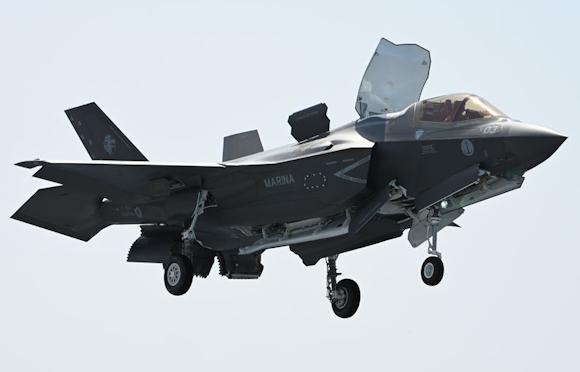While many Italian athletes are reaping sporting successes at the Olympics, bringing prestige to Italy and causing many stomach ache to some decidedly unsportsmanlike foreign colleagues, the never completely dormant antagonism between Aeronautics and Navy, which certainly does not bring prestige to our flag.
I refer to the orientation of the Chief of Defense, dating back to the spring of 2020, not to give priority to the Navy the F-35B aircraft ("naval" version, with short take-off and vertical landing) that it needs to exploit fully its naval platforms, in order to equip the Air Force with the ability to deploy aircraft where long runways do not exist. A decision contrary to the gentlemen's agreement a few years ago which, according to many authoritative experts, would cause a significant delay in reaching the full operational capacity of our aircraft carrier Cavour, flagship of the Italian fleet.
In this regard, the unpleasant situation that has arisen, combined with the already strong concerns of the top management of the Navy for the lack of modern operational tools, has recently led the commander-in-chief of the transferring naval team to make bitter reflections during his greeting speech.
The aerial instrument and the sea
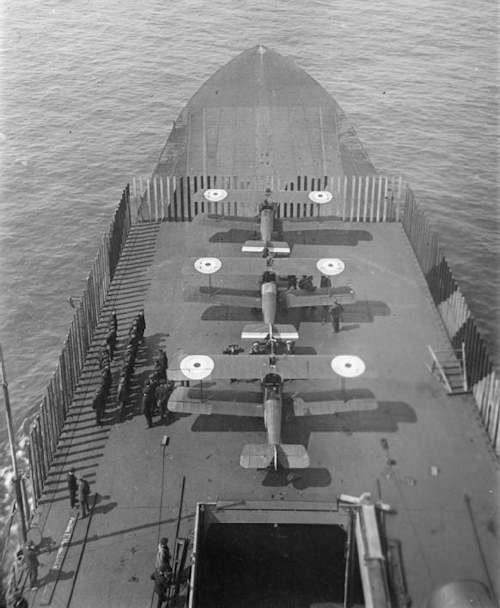
As an instrument initially imagined in support of "land" operations, the air vehicle immediately proved to be extremely useful even when used on the sea, in support of naval maneuvers. This made the main navies of the world understand the potential of the "new" vessel, embarked for the purposes of advanced surveillance, defense of naval training, attack on enemy ships and power projection. These, starting from the end of the First World War, then deepened the specific experiences made in those terrible years to make the aircraft carriers more operationally effective, marking the substantial end of the era of battleships.
Those insights highlighted the considerable difference between the operational theater of the Navy and that of the Air Force, the different uses and, consequently, the different training the pilots had to undergo, inducing the main navies to set up air forces (vehicles and personnel) dedicated and dependent on a chain of command that was headed by the top of the Navy and not by those of the Air Force.
Unfortunately, those experiences were not valued by Italy, which made the current of thought prevail, favored by those who evidently wished at the time to maintain a home dominion of the skies, who saw our peninsula as "... a huge aircraft carrier jutting out over the Mediterranean ...". Therefore, the route of the construction of battleships was followed, already everywhere now operationally on the avenue of the sunset, instead of the innovative aircraft carriers, with all the tragic consequences that the history of the Second World War has handed down to us (eg: requests for air coverage that they had to overcome two chains of command and failed or delayed intervention, once the battle had already tragically ended or the aerial protection of the supply convoys destined for the African front).
Fortunately, today this is no longer the case and Italy has understood that the aircraft carrier represents the capital ships of a fleet, which adds significant political and operational value to the nation, especially as regards its prestige in international relations.
Technological progress has also favored the transition from the initial very "essential" embarked aircraft to aircraft in an increasingly sophisticated naval version and able to interface better and better with the systems on board the Navy units, of which today they represent in all respects an important and effective weapon system.
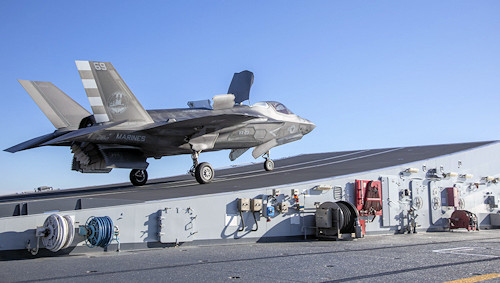 The Lockheed Martin F-35 "Lightning" is built in three versions, the first of which is called "Alfa", the conventional take-off and landing (CTOLi), which operates from the airports.
The Lockheed Martin F-35 "Lightning" is built in three versions, the first of which is called "Alfa", the conventional take-off and landing (CTOLi), which operates from the airports.
The other two are called "Bravo" and "Charlie" and are naval versions designed to meet precise construction and operational characteristics of the units on which they are to be embarked, that is aircraft carriers or amphibious units with or without ski-jump (version "B" STO / VLii, with short take-off and vertical landing) and aircraft carriers in CATOBAR configurationiii, ie equipped with catapults and stop cables (version "C").
It is the most advanced fighter aircraft in the world, which combines the features stealth (i.e. very low radar visibility - reserved for the countries of the "Five Eyes" alliance, Ed) also very high connection capacities between weapon and pilot systems and between aircraft and command and control systems.
Naval suasion and protection of national prestige
A peculiarity of the Navy is the ability to extend the armed arm of the state wherever it is required, not by resorting to force but being ready to use it, essentially applying the "Naval suasion" mainly to defend the freedom of navigation against pirates or anyone who acts to limit this right, essential to ensure the free movement of goods and the supply of raw materials, particularly in a globalized world such as the present. But the operational capacity of the Navies can also be used for the fight against international terrorism, the trafficking of weapons, drugs or human beings (inspections on board merchant ships) and for international civil protection tasks such as bringing relief and aid to populations affected by natural disasters. Not surprisingly, since the second half of the twentieth century the impact of naval and maritime issues on the foreign policy of states has considerably increased.
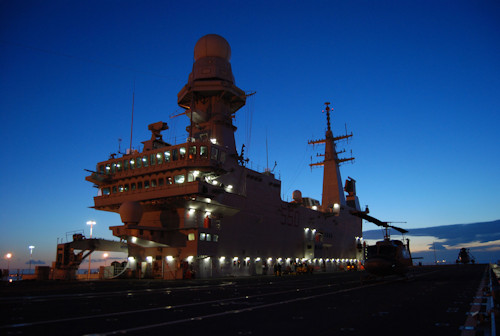 In this context, the aircraft carrier and its embarked aircraft represent a very important weapon system for a modern Navy, whose full operation is essential for the development of suitable strategies for safeguarding national interests (v.articolo).
In this context, the aircraft carrier and its embarked aircraft represent a very important weapon system for a modern Navy, whose full operation is essential for the development of suitable strategies for safeguarding national interests (v.articolo).
Italy is among the very few navies in the world to have an aircraft carrier and a deep-sea military fleet, capable of operate in a three-dimensional environment anywhere in the world, with state-of-the-art combat systems and naval aviation that is quantitatively contained but qualitatively excellent, as demonstrated by the numerous awards received and the extremely high efficiency and operability demonstrated on every occasion. A fleet and naval aviation that are capable of facing a wide range of missions and capable of projecting anywhere, due to their innate ability expeditionary, the image of Italy in support of foreign policy and national economic and political interests.
A Navy capable of effectively projecting itself into distant waters, ensuring presence and surveillance in areas of strategic importance of its country is, therefore, indispensable for the protection of national interests, for its international prestige but also to be able to participate adequately on the seas and oceans of the world to international naval devices operating under the aegis of the UN, NATO, EU or ad-hoc coalitions, as in the case of anti-piracy missions, surveillance of the Straits or in execution of international agreements.
A strong Navy to guarantee national interests
But to do this it is essential to be ready, have personnel perfectly trained for specific tasks and a sufficient number of suitable means to achieve the objectives of the assigned mission. To many observers, therefore, the current hypothesis of subdivision of the assignments of the new F-35B aircraft appears absolutely anachronistic and strategically blind, which imposes an unnecessary delay in reaching the full operational capacity of the Navy and its aircraft carrier, now indispensable in contexts of high threat.
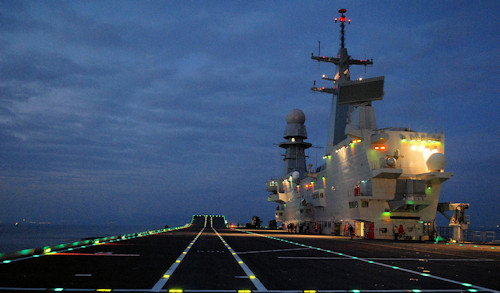
Therefore, it would be preferable to remove any reason for internal friction within the Defense by ceasing to be guided only by small-scale objectives and to start acting with national and, therefore, collective interests well in mind, in a broader strategic perspective.
As Germano Dottori writes, Italy is experiencing a grotesque situation in that "... we have a light aircraft carrier, the Cavour, and an even larger multifunctional ship, the Trieste, both capable of hosting F-35B aircraft that would represent the spearhead of our military system ... but their line of flight…"iv.
Despite the delays in the assignment of the new aircraft, the Navy is slowly continuing to walk the road towards full operational capability (Full Operational Capability - FOC). In fact, last March in the United States the Cavour has completed trials to obtain air operations certification (campaign Ready for Operations) and on 30 July, accompanied by very strong emotion from all the sailors of Italy, the first F-35B was set up to begin the training of pilots for the acquisition of the "Bravo Feature", or the certification of the ability to landing and take-off from the flight decks of ships.
As underlined by the Chief of Staff of the Navy, Admiral Giuseppe Cavo Dragone, these are significant steps “… towards the strategic objective of providing the Defense and Italy with an aircraft carrier capability with the latest generation of aircraft on board. A capacity that projects us into an elite of a few countries in the world, thus raising the weight and international importance of Italy… ”. An international prestige that it is not an end in itself, but serves to effectively protect national economic and political interests in the world (v.articolo). Goals that could be achieved more quickly if we forget what appear to be small and careless interests of some sectors.
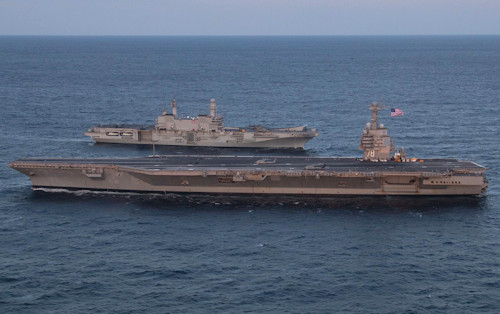
It is for this reason that a rethinking of the distribution criterion of future F-35B aircraft by the Defense would be desirable, quickly assigning to the Navy all fifteen planes (at the moment it has only three) to complete the flight line from embark and provide for the subsequent assignment to the Air Force of the fighters in the naval version assigned to it with the aforementioned agreement between gentlemen, for the uses that it intends to make of them. A decision that would put the national strategic needs in agreement with the objectives of the two Armed Forces, without creating unnecessary discontent or curbing their respective operational efficiencies, and putting aside now anachronistic rivalries..
It should be noted that globalization and technological advances have multiplied international trade exchanges, the great majority of which takes place by sea and it is mainly on water that these economic interests will be protected. A modern state, with strategic horizons that go beyond the fence of its own backyard, needs a Navy also destined to sail far from its territorial waters because maritime safety, in all its aspects, is an undeniable and indispensable value of any state. independent. And a fully operational aircraft carrier is an added value that Italy cannot give up.
In a Mediterranean and global panorama of growing challenges, tensions and competition, where we are witnessing an increasingly accentuated territorialization of the sea, a strong Navy is the best guarantee to protect Italian economic and political interests on the sea and beyond (v.articolo).
Unnecessarily slowing down the operational and strategic capabilities of an Armed Force, limiting its international role and renouncing to pursue the objective of having complementary and non-antagonistic Armed Forces, means thinking again in terms of bell tower, moving back the hands of the Italian clock, which does not has no need.
i Conventional Take Off and Landing
ii Short Take Off / Vertical Landing
iii Catapult Assisted Take Off But Arrested Recovery
iv Limes 10/2020 p. 83
Photo: Navy / IWM / US Navy

